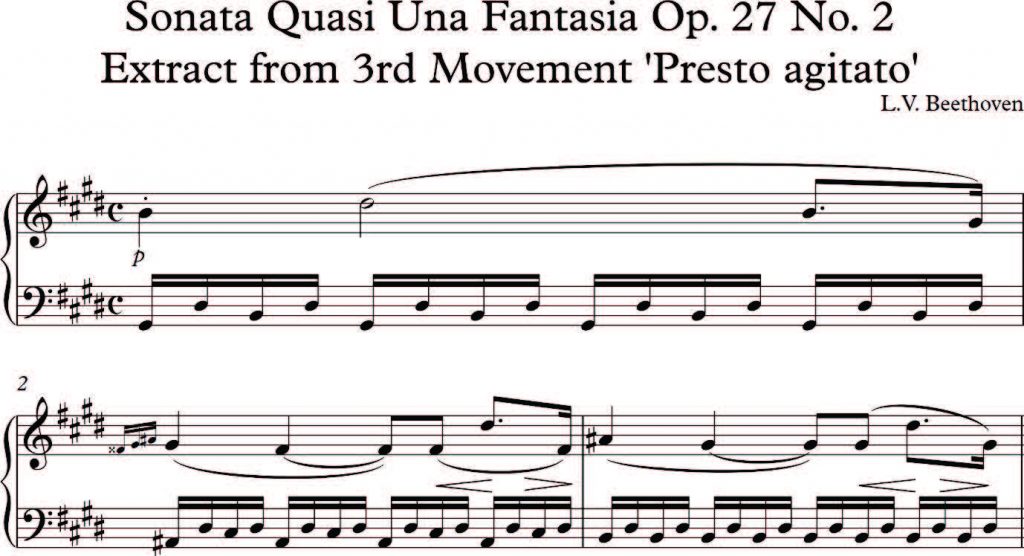What is an Alberti Bass?
The Alberti Bass is a form of accompaniment that first appeared during the Classical Period and continued well into the Romantic Period. Although he didn’t actually invent the figuration, the name comes from Domenico Alberti, a musician, composer and singer born in Venice in the 18th Century who used the figuration rather excessively in his numerous keyboard sonatas. It is now seen as a cliché form of accompaniment figure but is still vitally important in the works of composers including Mozart, Haydn, and Clementi.
How would I recognise an Alberti Bass?
The figuration takes the form of a repeated pattern that typically consists of the notes of a triad (3-note chord) played in steady quavers or semiquaver notes in the following order: Lowest – highest – middle – highest.
Two examples are as follows:


Technique required to play an Alberti Bass Successfully
Looking at the figuration of an Alberti bass group, a note tends to be repeated. These repeated notes also tend to land on the weakest beats but played by the strongest finger – the thumb. It is very important that these notes don’t stand out from the other, more harmonically important notes. The bass line ‘melody’, as in the following example, is C – E – C – E, not C – G – E – G – C – G – E – G:

First step is to learn and play the groups as a CHORD so that the hand position and the shifts from one group to another can be mastered. Remember that having the hand positioned more forward, over the black keys, may help if any notes in the Alberti passage have accidentals.
Next, try playing the ‘melody’ notes minus the thumb by dropping from the wrist into the first note and gently lifting the wrist before playing the third note. Once this feels comfortable, move onto playing all four notes, in an exaggerated manner at first, by dropping from the wrist into the first note, then gradually lifting the wrist as you play the other three notes (see Example 4).




This can be practiced on the knee so you can feel the pressure on the low notes and the lightness of the thumb on the repeated notes.
Points to watch for
It is important a ‘sawing’ motion is not used to achieve the Alberti bass movement – i.e. no sliding back and forward along the keys. This is tiring for the arm and causes the wrist to lock. As mentioned earlier, if the repeated note is played too loud, it becomes too prominent in the ear. Anything repeated focusses the ear on that note. By lifting the hand, via the wrist, through the movement of the Alberti bass the repeated note should not sound louder than the first or third note. The Alberti bass figurations were developed at a time when the keys of keyboard instruments were much lighter than they are on a modern grand piano. Most of the movement back then would have been finger movement only. However, to ensure a clean sound is achieved on a modern piano, make sure the fingers are also used while employing the movement of the wrist.